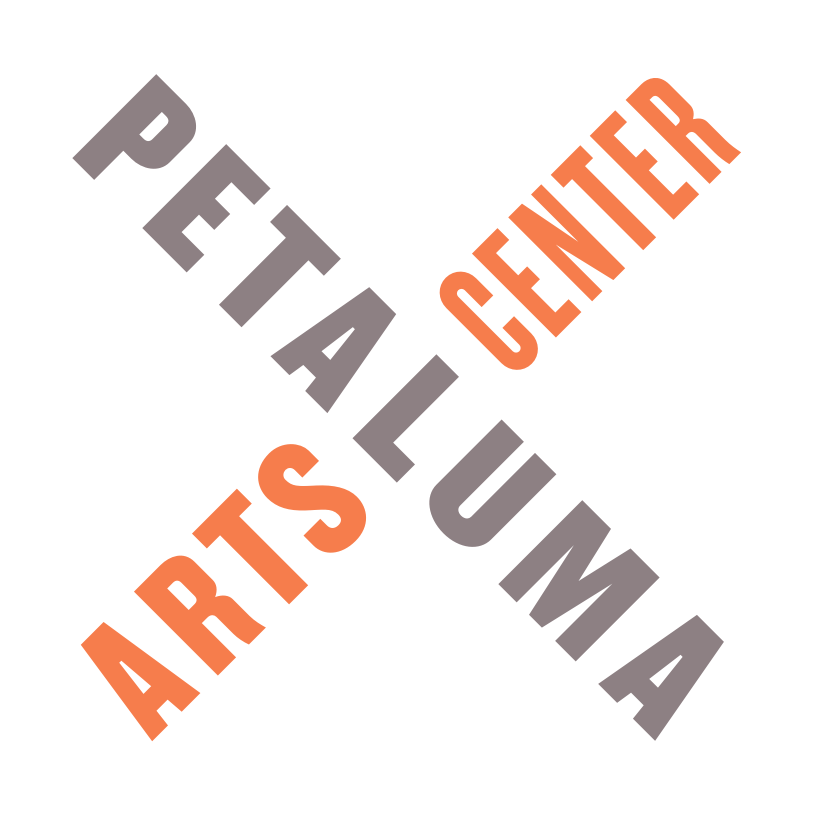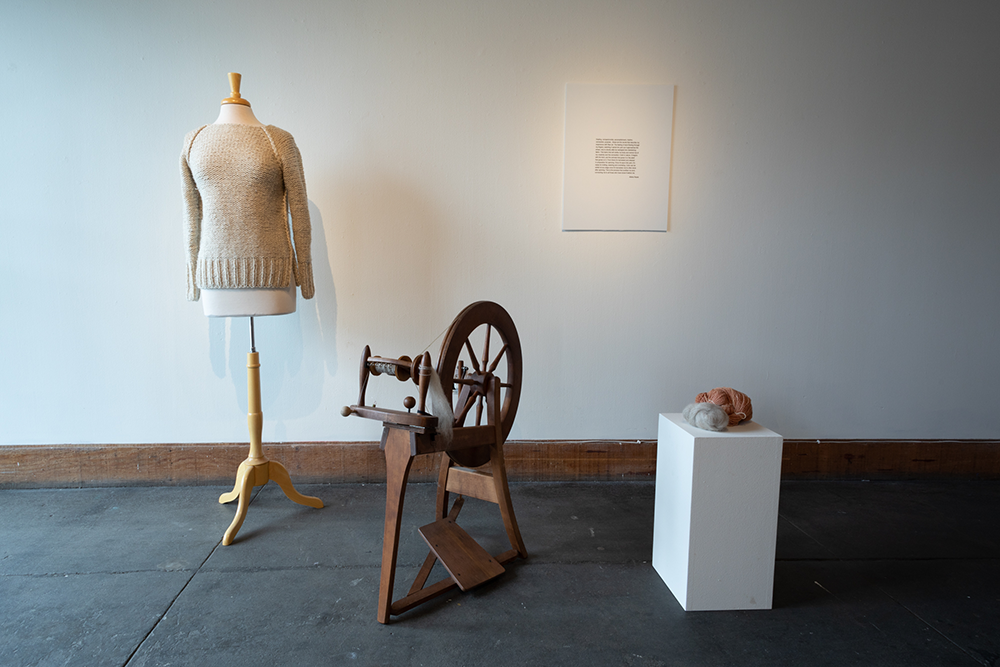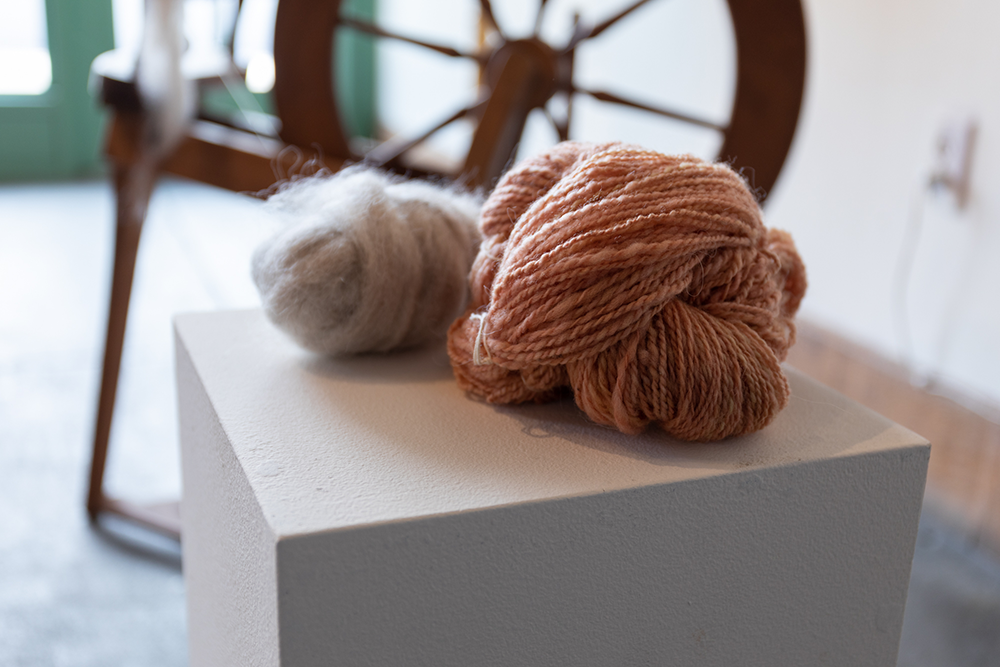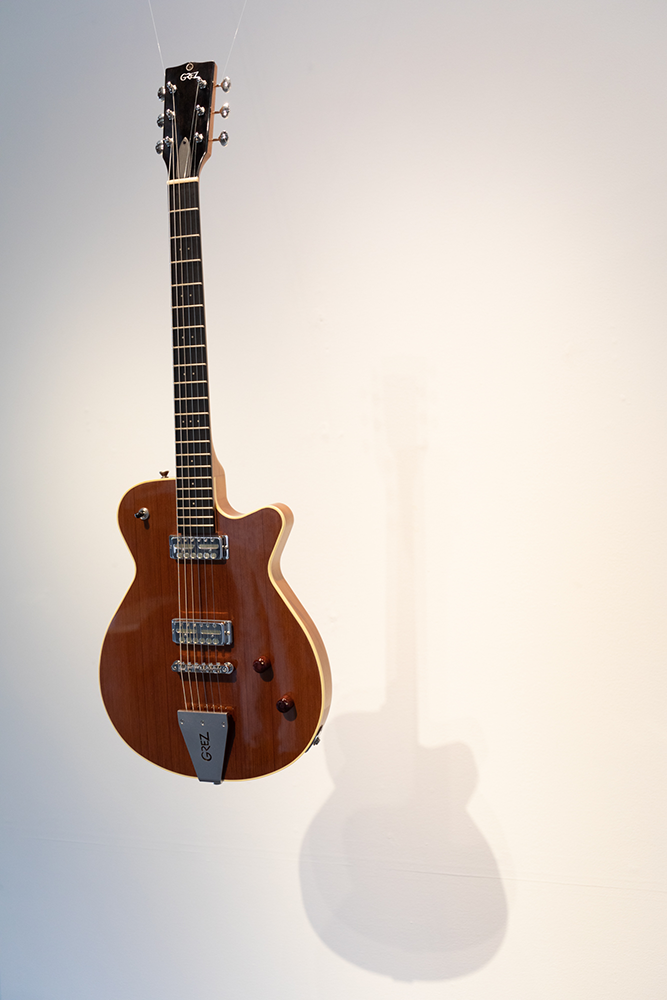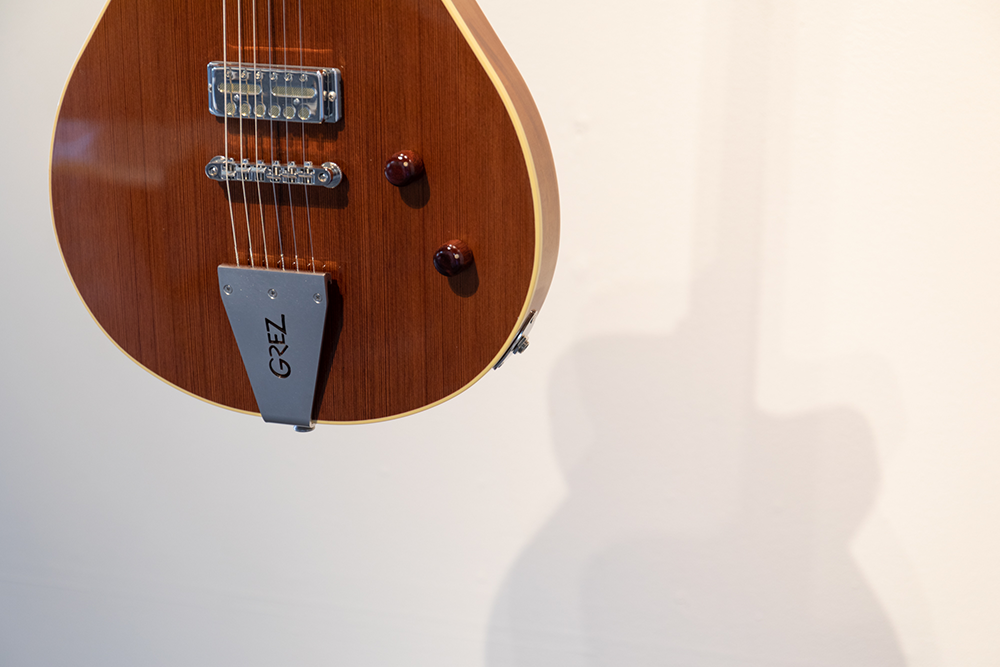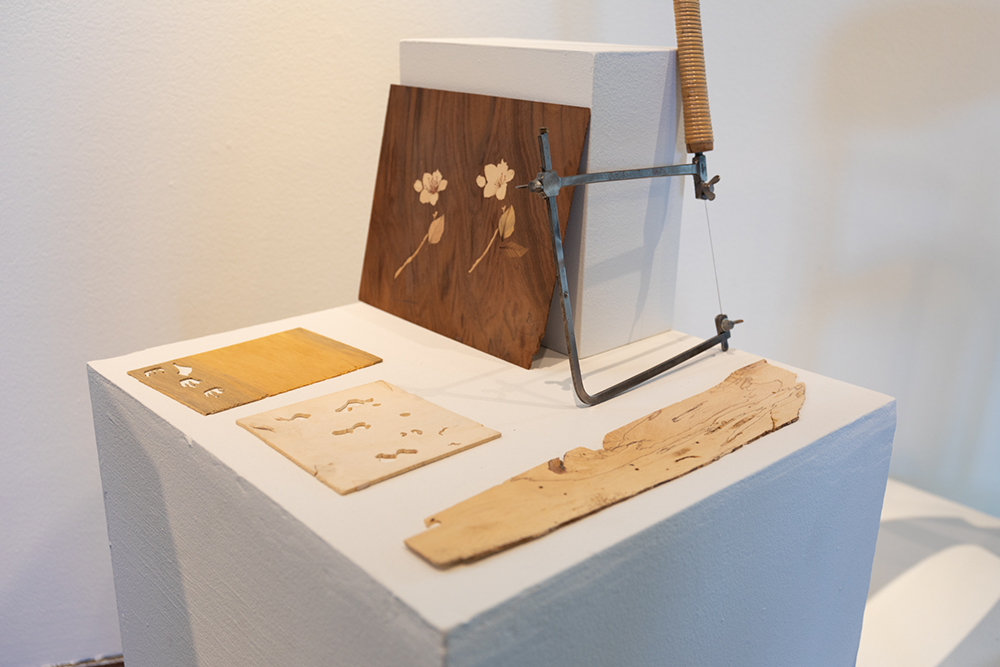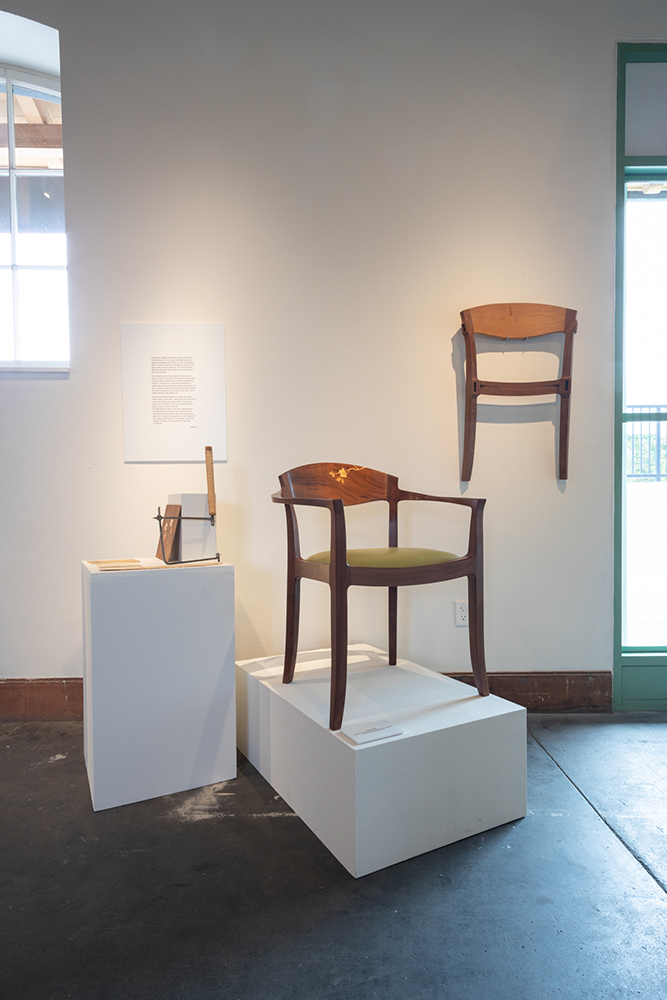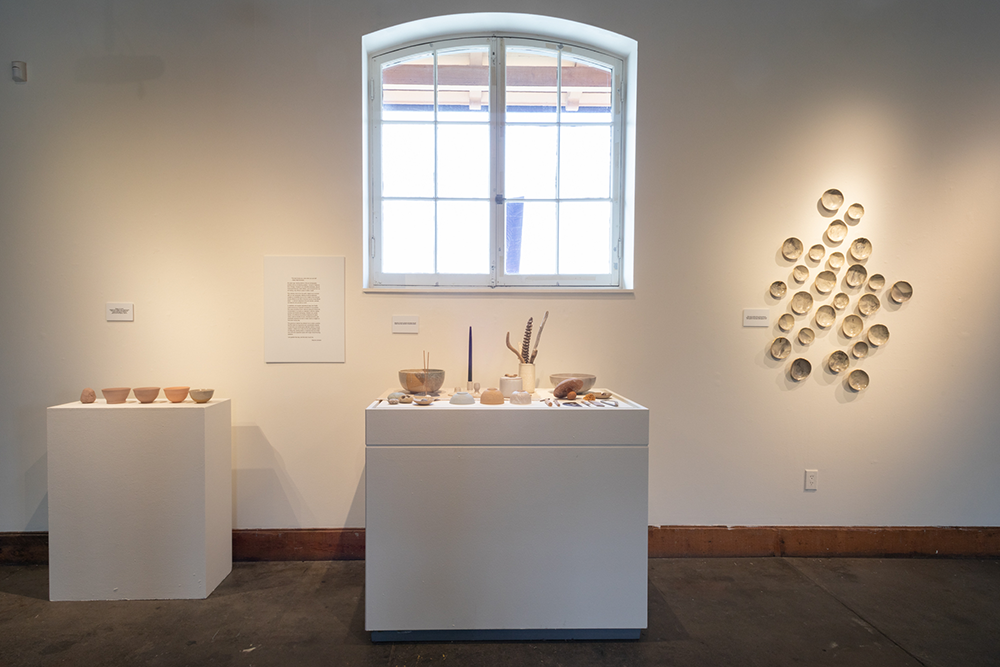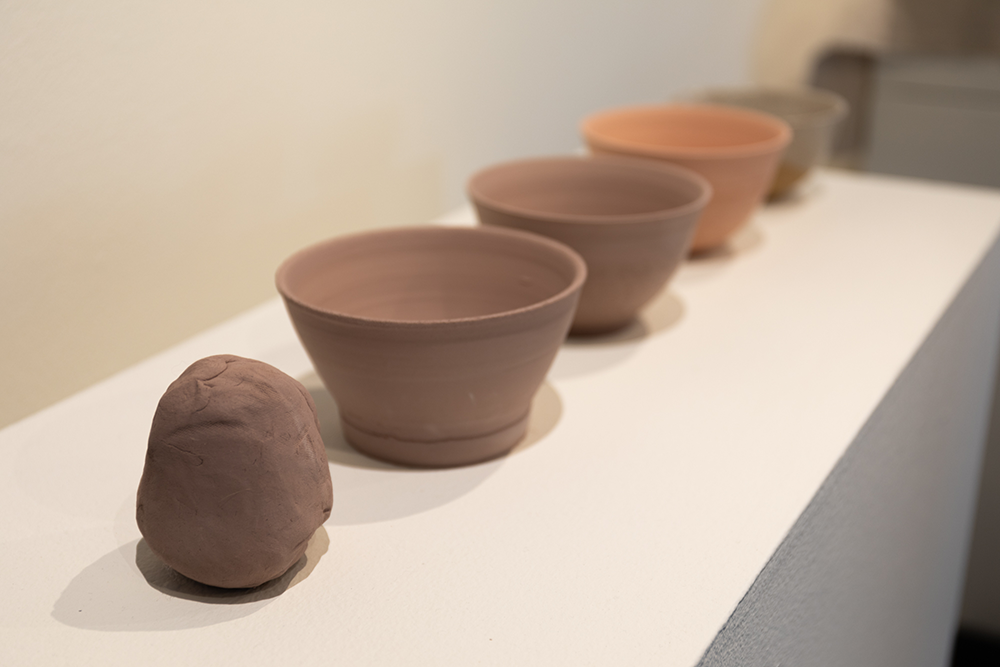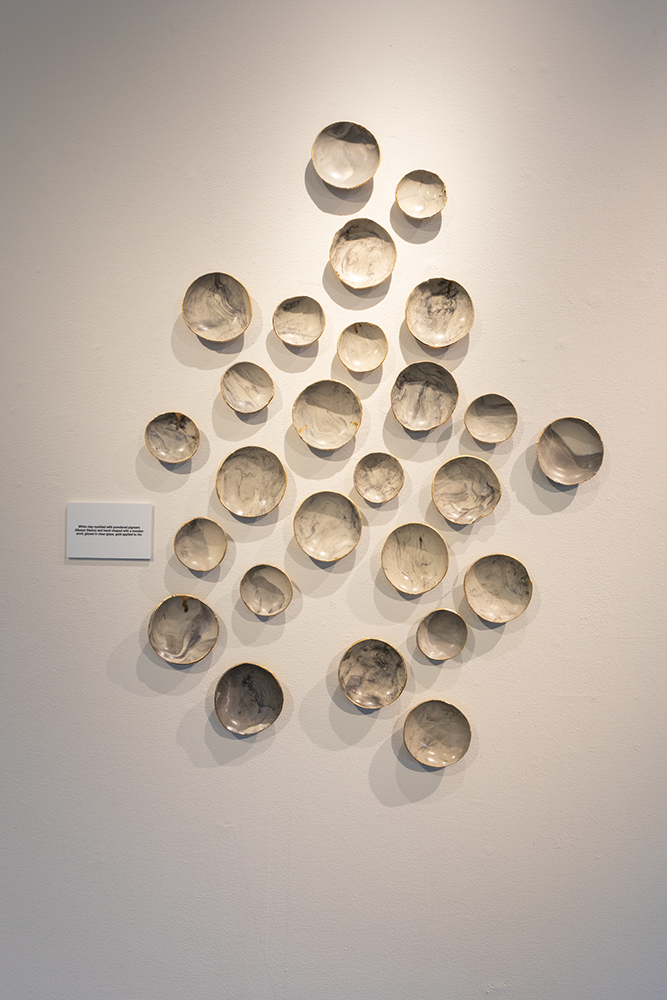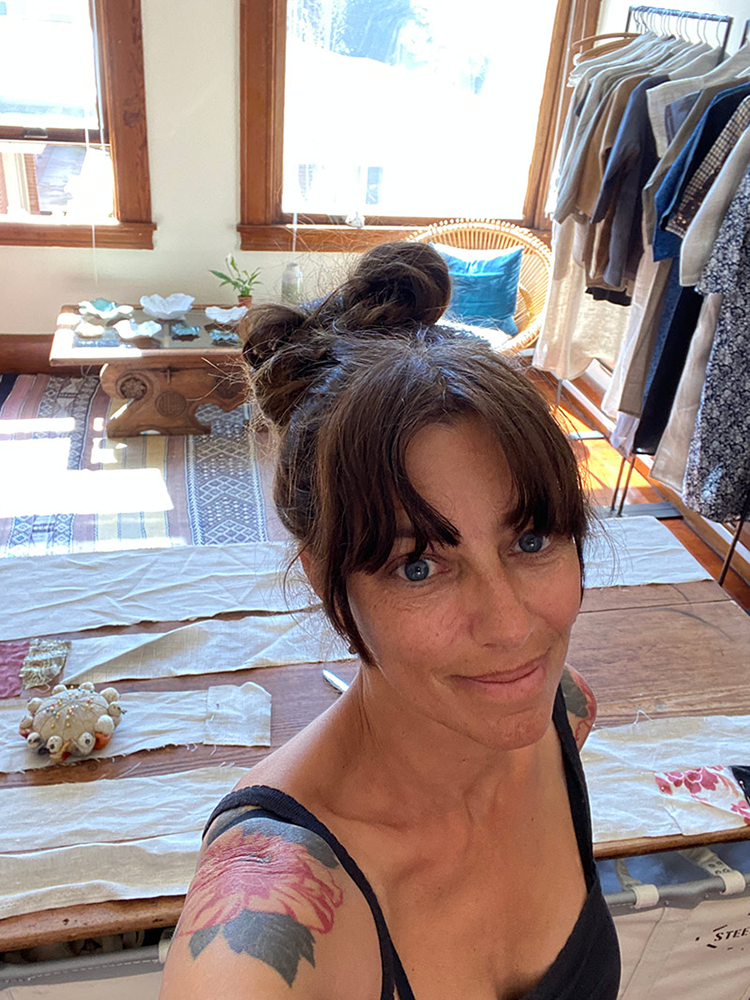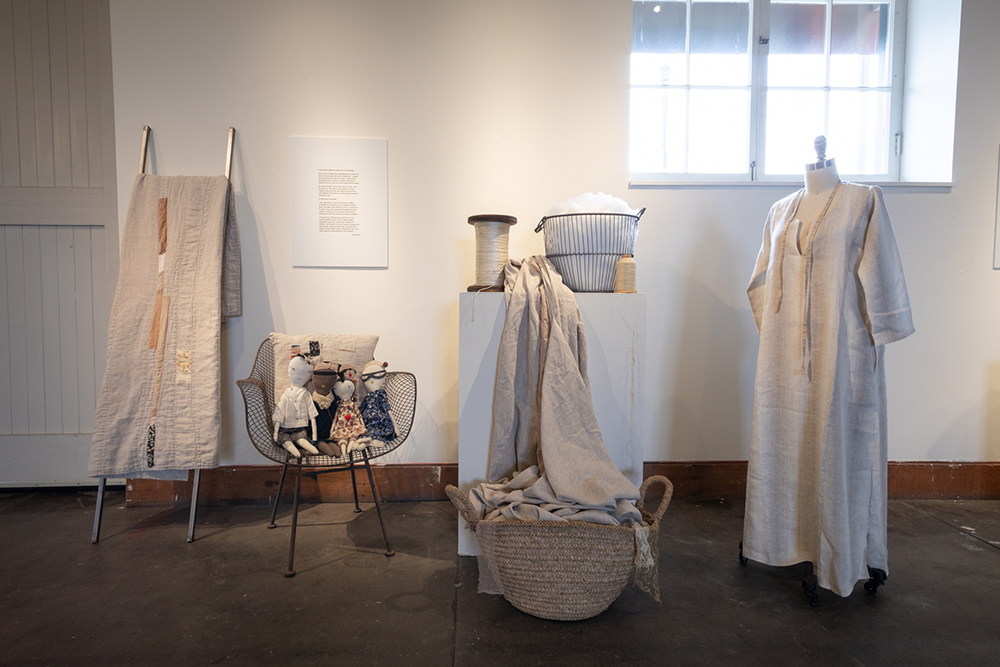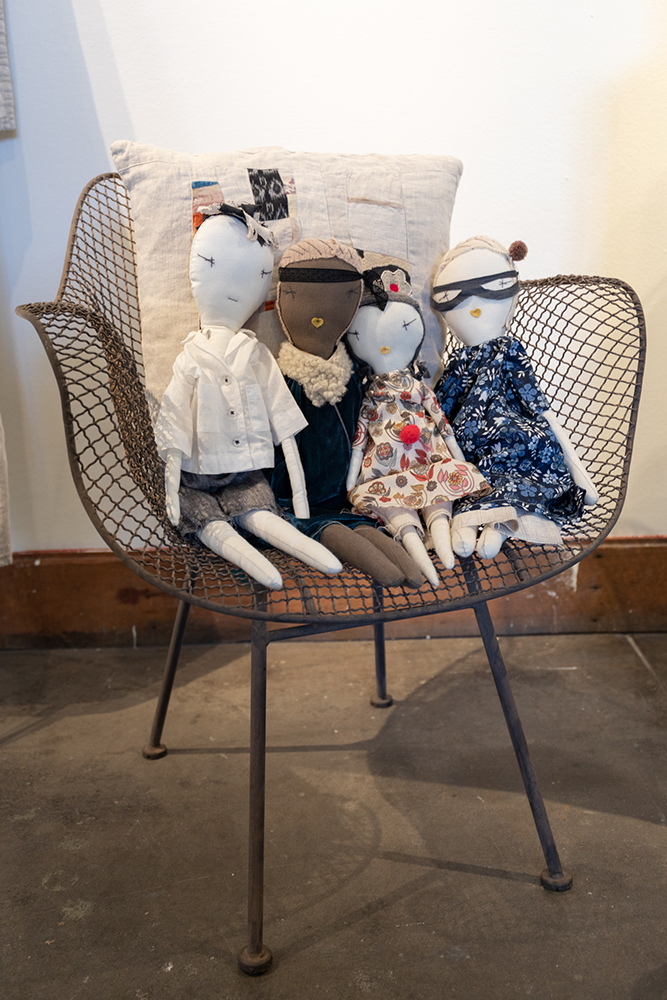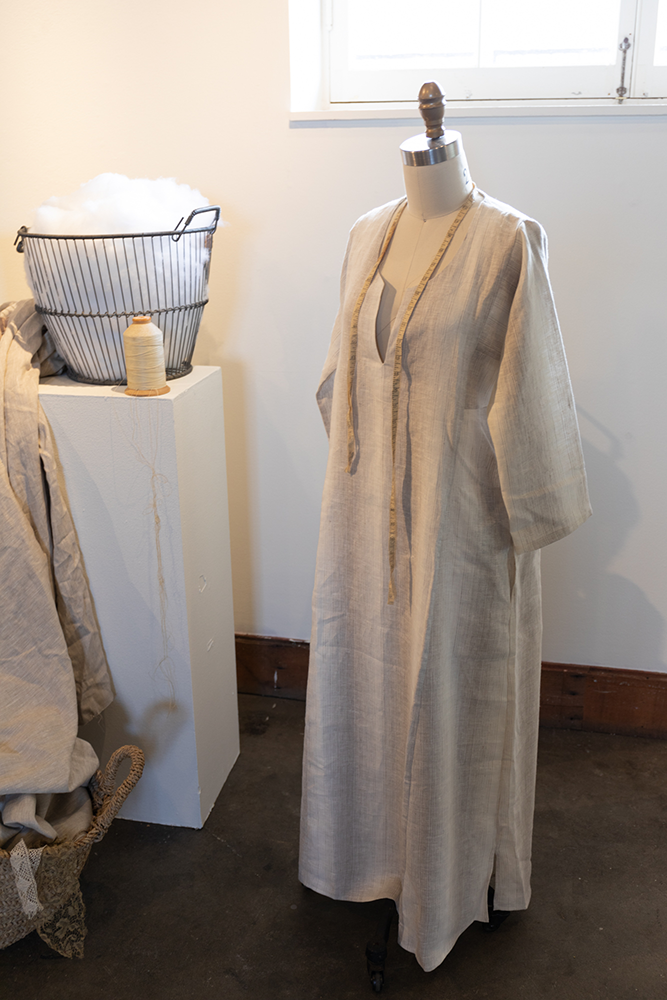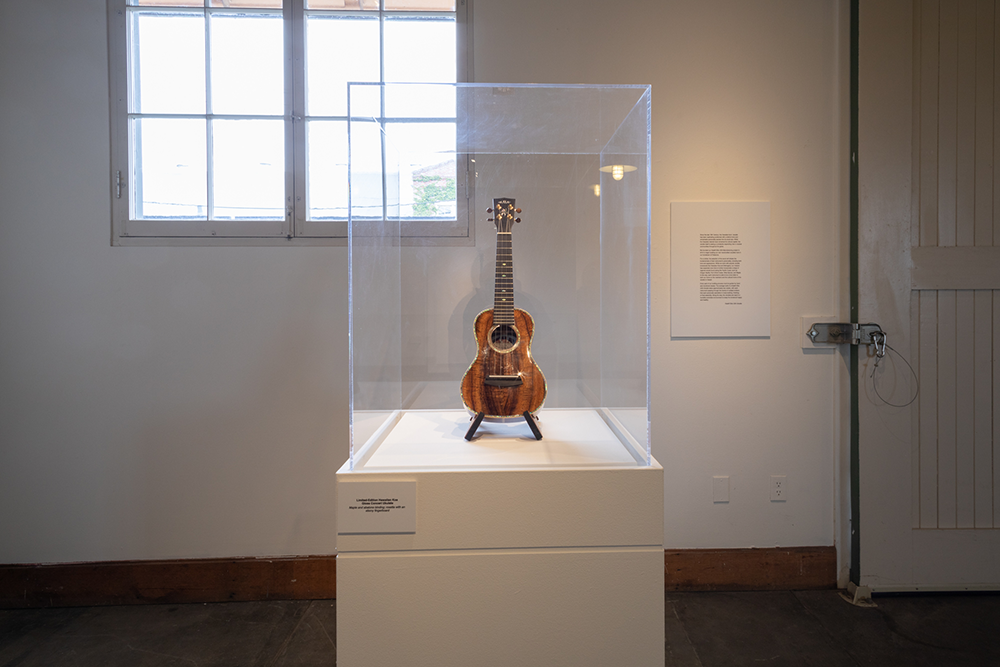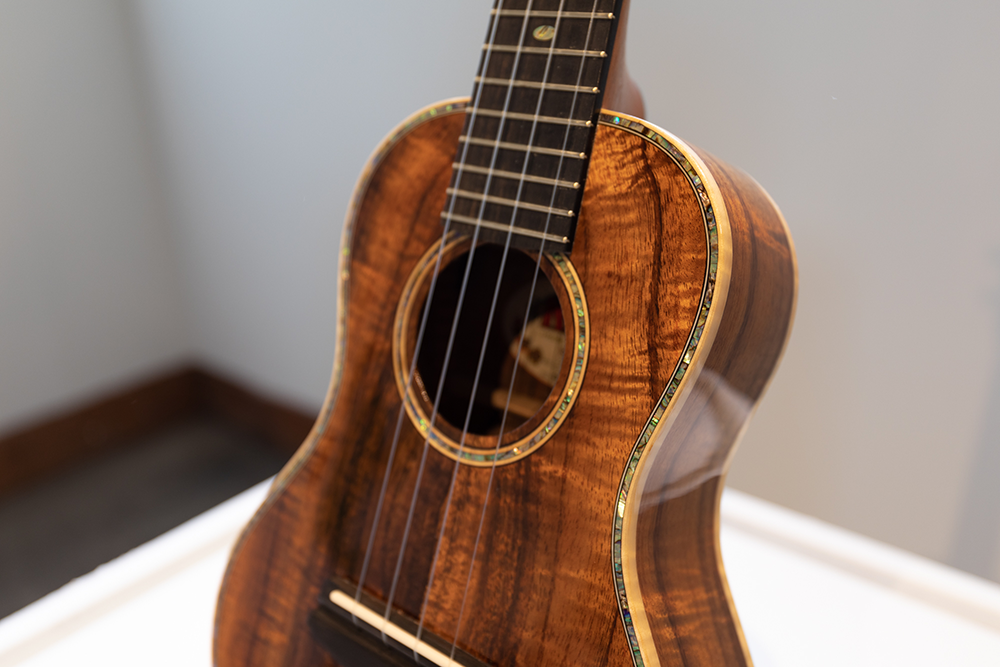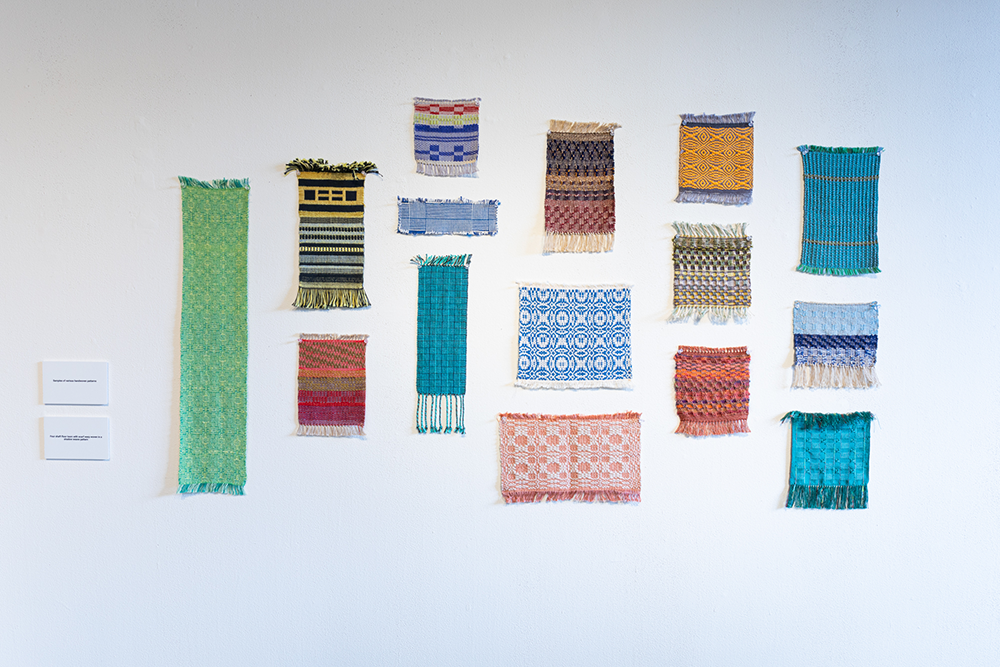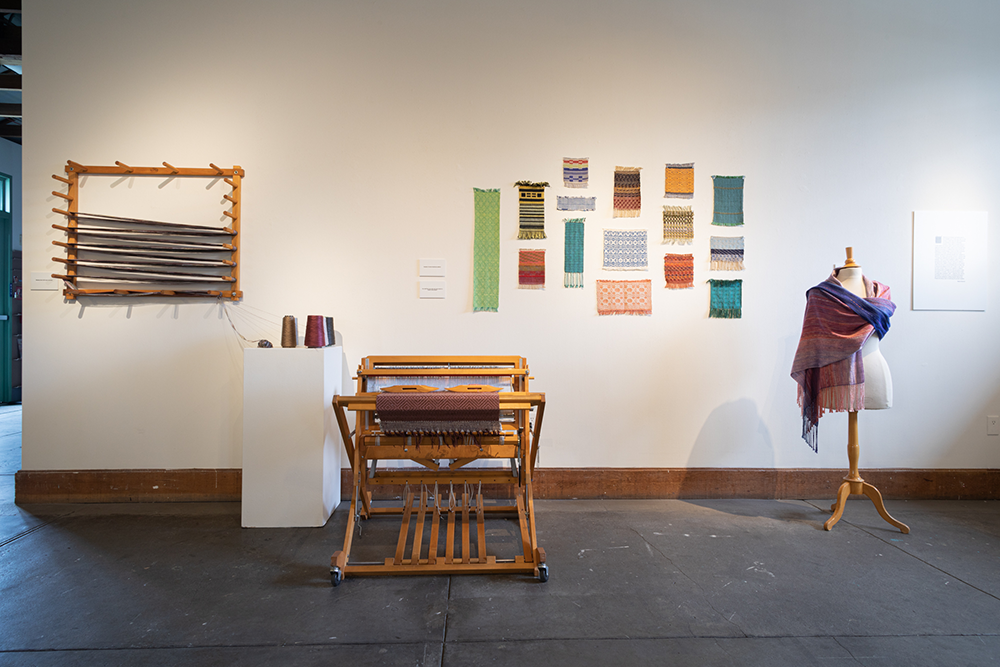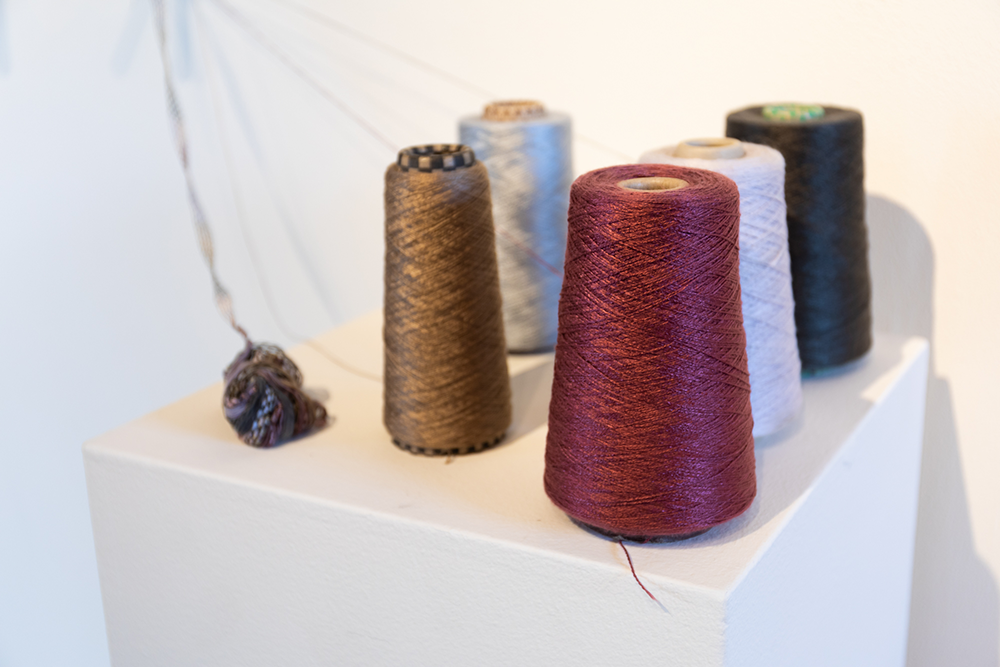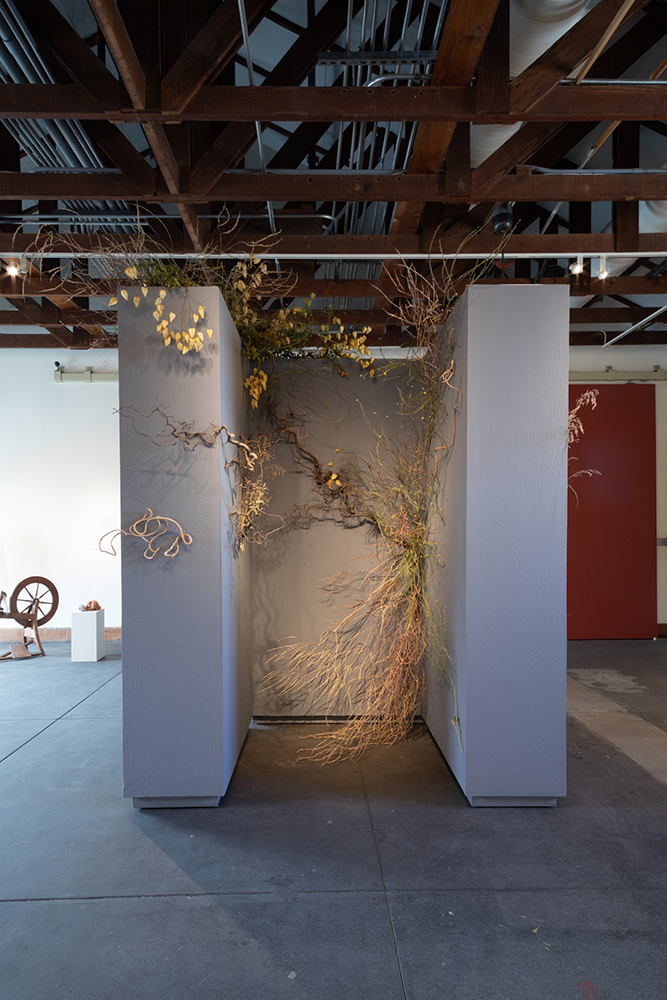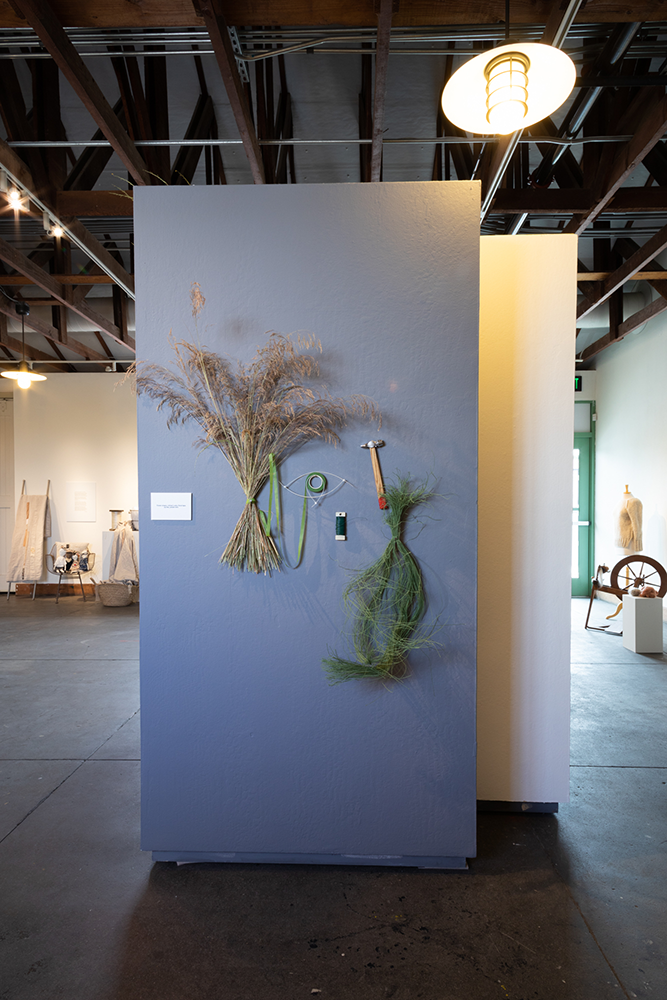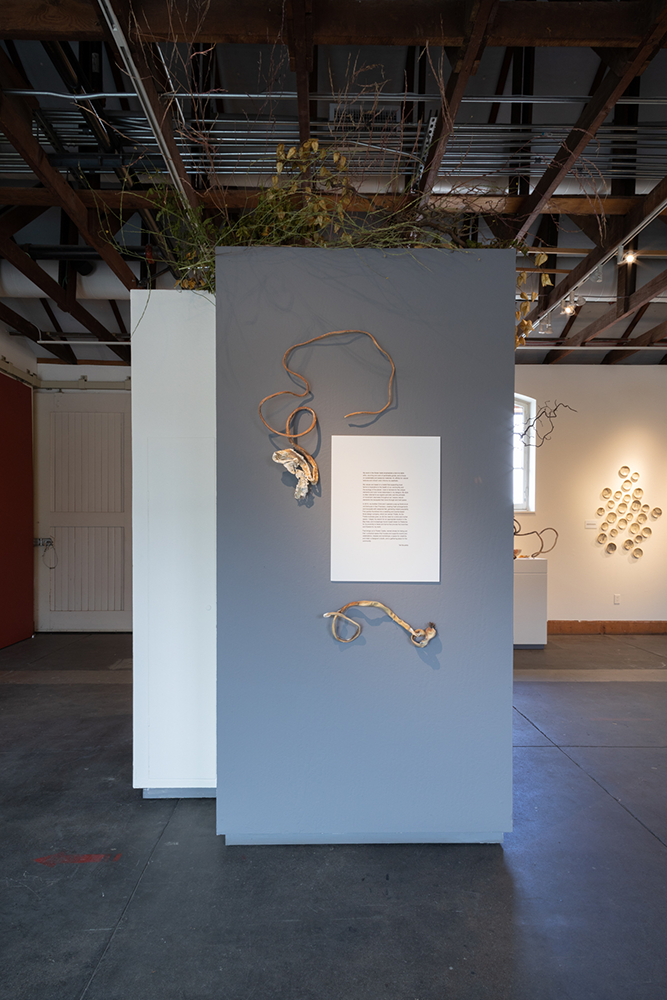By Hand: Makers Among Us
August 14 - September 18, 2021
Opening reception Saturday, August 14, 5:00pm-7:00pm
This exhibition looks at the work of Petaluma creatives whose craft may be seen as tangential to the fine art world. In an effort to expand our definition and perception of the arts, we shine a light on these makers from our local community who create beauty and function in their work; taking art off the wall and highlighting connections between art and life. In a juxtaposition of objects, images and text, a story of methods and materials unfolds, illuminating both product and process.
Curated by Carin Jacobs.
Alisha Reyes / Fiber Circle Studio / textiles
Healing, companionship, accomplishment, rhythm, connection, purpose… these are the words that describe my experience with fiber art. The feeling of wool flowing through my fingers, watching it spiral into yarn as it approaches the wheel, only to shortly after be reshaped into intertwining fabric. This fabric that will clothe my body and remind me of my creativity and the connection I hold to nature. It begins with the land, and the animals that graze it or the plant that grows on it. From there it’s harvested and cleaned in preparation for spinning. Once it’s spun into yarn, it’s ready for knitting, weaving and crocheting. Color can be added at any stage once it’s harvested, but is often done after spinning. This is the process that soothes my soul, connecting me to all those who have done it before me.
Barry Grzebik / Gretz Guitars / luthier
In the world of wooden stringed musical instruments there is often an appreciation for the sound of older instruments. Some would attribute this, at least in part, to how the wood naturally seasons over long periods of time.
In Sonoma County and the surrounding areas, 100+ years ago, nearly everything was built with first growth Redwood and now, many of these aging structures are coming down or being rebuilt. Some of the Redwood from these old bridges, factories, water tanks etc, can be reclaimed and used to build musical instruments. This wood has been seasoning for 100 years or more in its life as a structure so when it’s used to build an instrument, we have, you might say, a head start.
The top or the “Sound Board” of this guitar uses Redwood reclaimed from the Cal Park Hill train tunnel now part of the SMART train system in Marin County. The dark streak down the center of the instrument is a soot stain from the old wood fired steam trains that passed through the tunnel for many decades.
Petaluma based Luthier Barry Grzebik of Grez Guitars strives to build guitars with Reclaimed Redwood from known sources giving the eventual owners of these instruments a sense of history and conservation. To further promote and support Redwood trees and forests, Grez plants a Redwood tree for every guitar built.
Greg Zall / Greg Zall Woodworking / woodworker
My goal was a slightly modern sleek chair to reflect a non-formal dining room. The low back and leather seat add a casual look that goes with the type of dining most people do daily. It is light and moves around easily but the joinery can take the wear and tear of daily use. The main idea is that after a few hours with friends, a beer, and a meal the chair remains comfortable.
The rounded joinery is characteristic of my favorite “mid-century modern” chair maker, Sam Maloof. His chairs reflect an era of California woodworking that has influenced many makers. I mimicked his rounding and curves that add a friendly, welcoming softness to the hand and the back as you sink in. However, Maloof’s work was always heavy, overbuilt. This chair's beveled curves and lighter weight make it more usable and add a crisp modern look.
The wood also reflects California. It is native west coast walnut milled in Sacramento. Using a dark wood when there are so few elements adds visual weight. The colors and figure in the "claro walnut " take full advantage of the few pieces of wood involved in the chair.
The apple blossom inlayed on the top is inspired by this quintessential Sonoma County tree. At certain times of year, where I live, the blossoms can cover the ground like paper snow. Inlaying is my passion and I love to spread my techniques and enthusiasm to other people. I teach inlay classes in my shop, an old, converted chicken coop in Petaluma.
Gwynne Johnson / Guinevere / ceramics
"The land knows you, even when you are lost" -- Robin Wall Kimmerer
Six years ago, leaving behind a fine-art photography practice and an art-teaching position, I moved to Petaluma from Chicago. Dropped in an unfamiliar landscape, stay-at-home-parenting two small children, and unmoored from my art-making, clay offered a place to tether myself.
This material, that is from the earth, helped me to connect with my new topography. Making functional tableware creates an immediate way for me to relate to the immense bounty offered by the hills of Sonoma County (Coast Miwok land) –– a call and response to the soil, farmers, animals, and laborers who provide so much.
In aesthetic, and equally inspirational ways, the Pacific Coast serves as an important touchstone in my practice. The ocean-smoothed forms I discover along her shores are incorporated in my studio as materials in both the making process and finished belongings. Striated rock, pocket stones, and driftwood are points-of-departure for glaze colors, used as handles for jars, mimicked as forms, and practically employed as tools to make marks or weights to hold down drying clay.
This generous material has allowed me to create a practice that fits inside the fragmented and unpredictable snippets of clock-time and mental space afforded mothers of young children. It allows me to drop into the small repetitive tasks of rolling clay, sanding wares, or cleaning tools and invites me to fill more expansive space with longer wheel-throwing sessions.
I am grateful that clay, and this land, found me.
Jess Brown / Jess Brown Design / textiles
A word about creating something out of the discarded .....
There’s a sort of magical thing that happens for me when I sit down at my work space with a pile of folded fabric... a basket full of stuffing and a few spools of thread. I get this sense of excitement that my hands can create something to be treasured and even loved out of these random bits and pieces.
So, that pile of fabric, the threads, ribbons, buttons.... even the pins I use... they all fill me with promise. I’m totally inspired by the notion that I can create something that is both utilitarian and beautiful out of what might be otherwise discarded scraps.
The thing about handmade...
I have always been in awe of the process of creating something to be treasured from raw materials. Whether fabric, clay, paper, metal, finds from a hike or a seashell on the beach, even pantry goods coming together to create a feast....it amazes me to no end that if one can allow themselves to connect to raw beauty, anything is possible.
I find there’s an undeniable energy that is woven into anything created by hand. There’s a feeling of deep appreciation I get when I hold an object created with intention. The idea that if I look hard enough at whatever the piece may be, I might just see the path the artisan took to create it. A brush stroke, a stitch, a fingerprint in clay... all of these things fill me with gratitude for this connection.
Kala Ukulele / luthiers
Since the late 19th Century, the Hawaiian-born ‘ukulele has been captivating audiences with a distinct tone and remarkable personality packed into its small size. While the Hawaiian Islands have remained its cultural capital, the ukulele itself is seeing a constantly expanding role in musical communities throughout the globe.
We founded our Kala® Elite USA Manufacturing project in 2015 to begin building our own handcrafted ukuleles here in our hometown of Petaluma.
For a luthier, the selection of the wood will dictate the fundamentals of their instrument’s personality, including both tone and appearance. While we work with popular ukulele tonewoods like Hawaiian Koa and Mahogany, our mission has expanded over time to further incorporate a range of regional woods found along the Pacific Coast, such as Oregon Myrtle, Port Orford Cedar, Sitka Spruce, and Maple. In this way, each instrument is able to be a love letter to both our home on the mainland and the cultural home of the ukulele in Hawaii.
Every part of our building process must be guided by hand and monitored closely. The average build of a Kala® Elite USA Ukulele takes approximately two weeks, with each instrument passing through the hands of multiple builders that each personally specialize in body-building, finishing, or final assembly. Along the way, the ukuleles are kept in a humidity-controlled environment to keep the tonewood happy and healthy.
Marta Shannon / Tactile Sensations / weaver
Weaving is an ancient craft dating back to the Paleolithic era, 27,000 years ago. It is the process in which warp and weft components are interlaced to make an interlocked structure. Today, fabric is usually woven on a loom which is the device used to hold the warp threads in place and under tension while a weft is woven through them. My fabrics are woven on traditional floor looms that are the offspring of a diverse lineage of looms and fabric production that evolved in Europe. I find that the looms and tools required to weave are inherently beautiful and a pleasure to work on. I am drawn to the process involved in weaving cloth - it is slow and methodical and requires focus, attention, and precision. There is a certain meditative quality to it that is grounding and calming. Color and texture are integral in my fabrics and I delight in finding inspiration in the natural colors that surround us and translating that into fabric that is sensual and elegant for the user to wear or use. Once the cloth is woven, there is a lot of attention to detail in the finishing which completes the cloth and gives it drape and sheen. In my work, I like to pursue the limits of what is traditionally considered “cloth” - exploring color, texture and pattern on the loom and in my finishing techniques. I get immense satisfaction crafting beautiful fabrics from thread and being a part of continuing this ancient tradition.
Tali Bouskila / Flower Casita / botanicals
My work in the flower trade emphasizes a farm-to-table ethic, sourcing and care of perishable goods, and a focus on sustainable and seasonal materials. An affinity for natural textures and vibrant color informs my aesthetic.
My values are based on a belief that supporting local farms is imperative to the health of our community and the ecology of the planet. I look to farmers for the unique elements and color tones elaborated in my designs. My style is often referred to as organic and wild, and the principle of movement resonates throughout as I weave natural elements into bouquets that move through and hold space.
In 2013, my brother Chris and I opened a pop-up florist at an old firehouse in San Francisco, creating fresh arrangements and bouquets with seasonal flair, garnering instant popularity. This quickly flourished into a wedding and events-based floral design company, which we named Thistle. As the Thistle business grew, so did the need for a brick and mortar space. I began my search for an appropriate location in the Bay Area, and increasingly found myself drawn to Petaluma for its proximity to fields and farms that provide the branches and flowers for my work.
That brings us to Flower Casita, named simply for being just that- a physical space that houses and supports events and celebrations, classes and workshops; a space for creativity and retail, a designer's studio, and a gathering place for the community.

Learn more about The Makers
